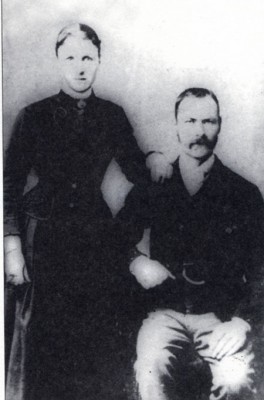Search Results for 'Patrick Boland'
3 results found.
‘A degree of darkness in the mind’

Remarkably, and that is a word already used in this drama, the court accepted Michael Cleary’s plea of manslaughter. He was charged with the murder of his wife Bridget by burning her to death, but the jury accepted that Cleary had really believed that his wife had been transformed into a ‘changeling’ by the fairies; and it was only a concoction of herbs and fire that would release her from its spell.
‘Amongst Hottentots one would not expect to hear of such an occurrence’
When the Kilkenny essayist Herbert Butler came to write about the burning of Bridget Cleary in 1960 he acknowledged that Slievenaman was always known for its mysterious past. Looking across the Tipperary border from his fields, he described it as ‘a pale blue hump with the soft, rounded contours of ancient hills whose roughness have been smoothed away by time. Finn MacCool lived there as did Oisin and Oscar, and 50 beautiful maidens, who gave it its name The Mountain of Women.’ In Bridget Cleary’s time, it was also the home of Denis Ganey, the local herbal doctor, and a man respected and feared for his knowledge of fairylore. It was to this house that Michael Cleary ran to on the afternoon of Thursday March 14 1895. He pleaded for a cure for his wife whom he believed had been taken by the fairies, and replaced by a woman that was not the Bridget Boland he had married.
‘That is not Bridgie Boland!’

On Monday March 4 1895, Bridget Cleary, walked up a hill to Kylenagranagh, the home of her father’s cousin Jack Dunne, who lived with his wife Kate, to sell eggs. The Dunne’s house, less than two miles from her slate-roofed labourer’s cottage at Ballyvadlea, Co Tipperary, was near an ancient circular mound of earth, or a ring fort, still known in rural Ireland as a ‘fairy fort’. Maybe it was because of the location of his house, or because of his skill as a story teller, a ‘Shanachie’, and that he had a limp, that Dunne had the reputation for being ‘an old man who is fairy-ridden’. People believed the local legend that he was once ‘chased up to his home by a man in black, and a woman in white’. He had knowledge of incantations, charms, and spells, and was sometimes consulted for a cure for animal or female sicknesses.

